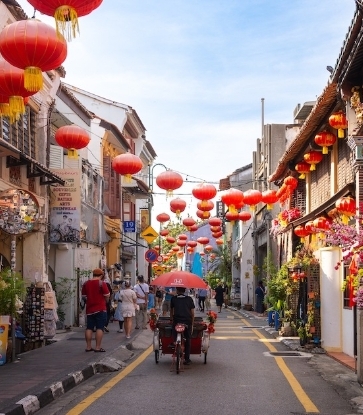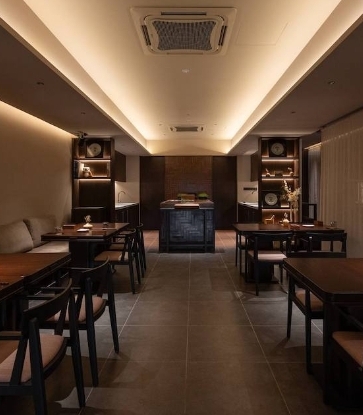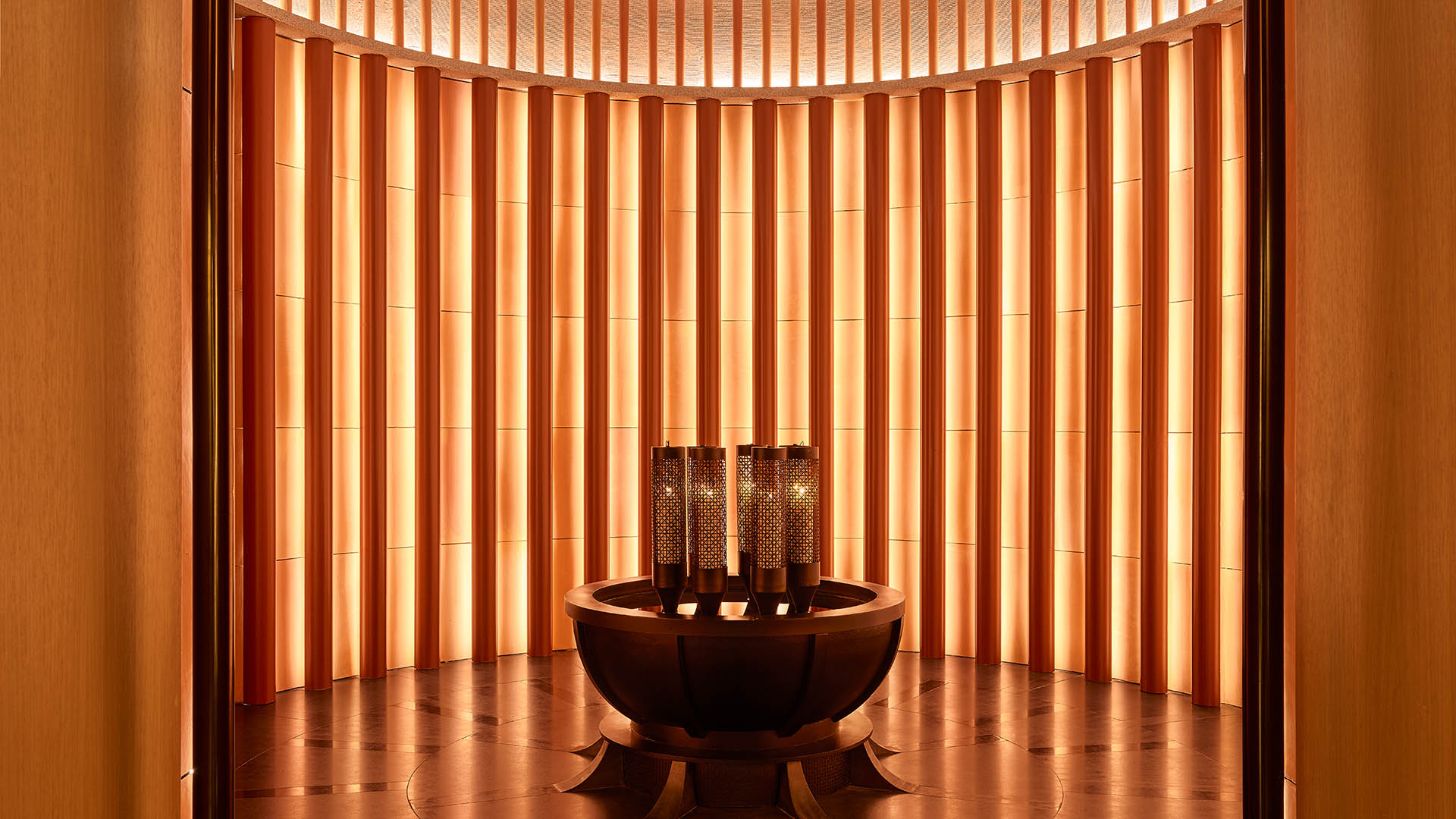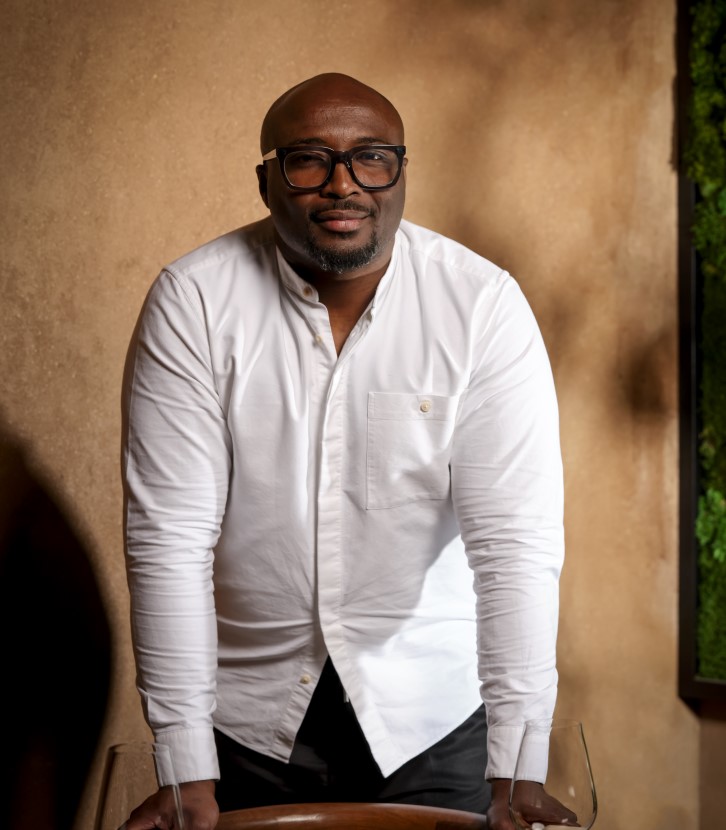When astronomers search for signs of life in faraway galaxies, they don’t look for spaceships, skyscrapers, or bustling cities. They look for water.
That’s how essential water is to life as we know it. We exist at its mercy. It covers more than 70% of the planet’s surface, even though just a tiny fraction of that is usable. What little we can access cleanses, purifies, rejuvenates, and nourishes close to eight billion people and countless ecosystems.
At one-MICHELIN-Starred Beta in Kuala Lumpur, water provides chef and co-owner Raymond Tham the fundamental building blocks he needs to steer diners on a gastronomic odyssey through Malaysia, informed by the country’s multiethnic heritage and anchored on its indigenous produce.
In partnership with MOMAwater, we dive into chef Tham’s culinary inspirations as expressed through the menus at his modern Malaysian restaurant, identifying the moments of clarity that defined his choice of career and cuisine. Tranquillity, after all, is an ongoing and ever-evolving process, as is MOMAwater’s mission to offer a chance for reflection with a simple sip of life-giving water.

A Delicious Tour Around Malaysia
In a similar vein, Tham offers guests plenty to reflect on when they sup at the table of Beta. The chef’s signature tasting menu, aptly dubbed “Tour of Malaysia”, sweeps guests to all four corners of the country, even as they remain firmly planted in the restaurant’s contemporary-chic dining room.
Over the span of two-and-a-half hours, stalwart ingredients and flavours from the Malaysian canon are highlighted, reinvented with a contemporary touch, and presented to eager guests. In its current iteration, this equates to ten courses — and therefore, ten lessons in geography, history, and gastronomy for those uninitiated in the delights of Malaysian cuisine.
“Malaysian food is like a melting pot — there’s so many different cultures. I think that’s where I’m still learning, even as a Malaysian,” Tham expresses.
One example he highlights is the regional difference between Peranakan nosh in Singapore and Melaka — a hotspot just an hour’s drive from the chef’s hometown in Port Dickson, which boasts “Indonesian influences”, versus a northern city like Penang, which draws more strongly from Thai cuisine.
“In Penang, there are no dishes featuring buah keluak (Pangium edule). But Penang has perut ikan (a sour-spicy stew made with fish stomach), which you can’t get in Melaka,” he describes, his eyes glinting with fervour.

Clarity of Vision
There’s an underlying intensity to the way the usually soft-spoken Tham enthuses about Malaysian cuisine. It speaks of hard-fought battles in service of a dream fraught with adversity.
Like many chefs of his ilk, the Malaysian spoke up about his vision of becoming a professional chef and operating his own restaurant from a young age — only to be met with disapproval from his family. Says Tham, iIt was not a respected profession back then.”
But, in an early moment of clarity, he stuck to his guns and persisted, working his way to a culinary degree from Westminster Kingsway London, one of the oldest and most respected culinary schools in the United Kingdom, before honing his skills in kitchens across the world.
In 2008, he came home to Malaysia, though his first restaurant outing would only come some years later in 2015, when he headed up contemporary European restaurant, Skillet. As it happens, Beta — the culmination of Tham’s heritage and selfsame culinary journey — only came into being in 2018, almost a decade after his return to Malaysian soil. “I believe everyone should have a goal and work hard for it,” he says simply.

Keeping Up With the Flow
Today, Tham continues to keep up with the flow, as if cognisant that remaining at the forefront of Malaysian cuisine requires that he remain never stagnant.
Nowhere is this more evident than in the constant renewal of Beta’s menu and its dishes, an iterative process made possible by the chef’s regular pilgrimages around the land in search of better and newer ingredients.
A signature dish of Tham’s — a risotto, crowned with slices of tender, smoke-kissed abalone smeared in a sticky spice glaze and livened up with dollops of locally produced caviar — has undergone no less than a dozen renditions, resulting in a plate that resonates just as deeply with the chef’s culinary sensibilities as it does the nourishing power of water.
For it is water that quenches the thirsty heirloom rice paddy fields of the ethnic Lun Bawang farmers in the highlands of Lawas, Sarawak, therefore yielding the heirloom rice that Tham uses in place of the more traditional arborio for its unique sticky chew and fragrance.
It is water — purified, salinised, and cooled — that keeps a decidedly cold-water fish, arctic sturgeon, thriving and spawning, allowing for sizeable yields of its prized briny black roe in a tropical country.
And it is water, in the deep, blue ocean, which acts as habitat and home for the freshly shucked abalone, chosen as star protein for Tham’s dish due to its connotations with luxury amid convivial celebrations like Chinese New Year.
But oftentimes, inspiration for the chef’s next dish comes not from without, but from within. One such example is their current bread course, hewn from tapioca — fermented black beans, and served with a red chilli emulsion. In its composition you will find not an iota of yeast.
Tham shares, “we often take inspiration from different stories. When I was young, my grandmother told me about the war, where there was a shortage of rice — so many of them had to eat tapioca. So, my team and I thought, ‘Why not come up with something?”

Reflecting on His Journey
When asked about advice Tham would like to give to the next generation of chefs, he pauses, then says, “I would like to tell young chefs to just work hard and enjoy the journey.”
It’s a statement that concisely sums up the chef’s attitude to the tribulations of life as a chef: Get up, do the work, and rest easy.
Though pockets of time are rare for a professional running a fine-dining kitchen in the heart of the busy Malaysian capital, Tham carves out time from his schedule to find a moment of clarity.
“When my day ends, I like to reflect on the things that happened during the day and see what went well, and what I can do better,” he says. “If the guests enjoy their dinner and I manage to do all my tasks, then I consider it a good day.”




















